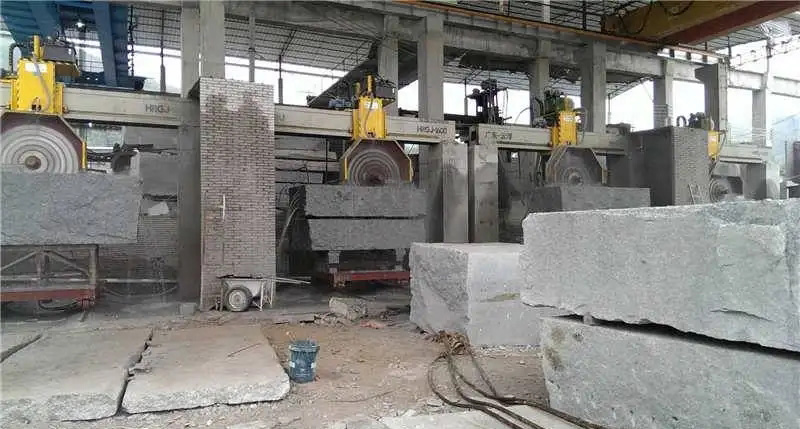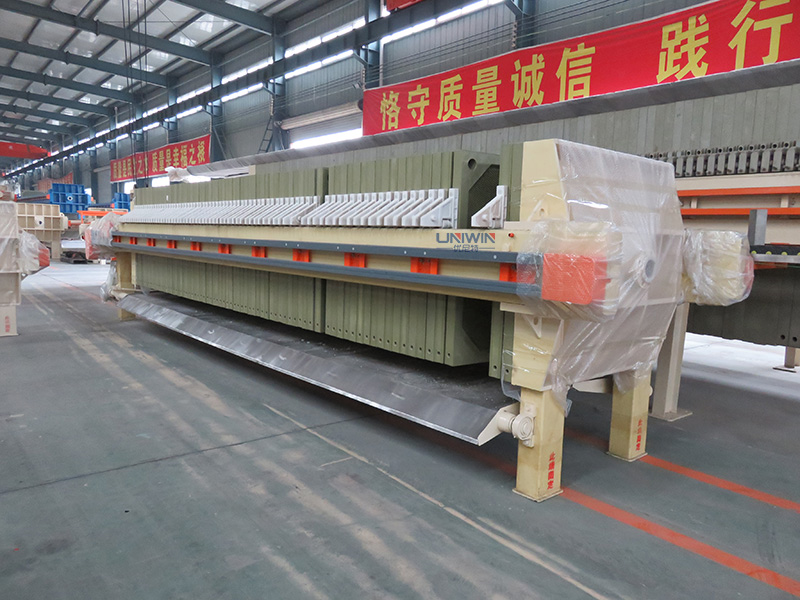Membrane Filter Press Application in Stone Wastewater Treatment
Stone wastewater is different from other wastewater, and ordinary filter presses cannot achieve a good filtering effect. This article will introduce the application and uniqueness of membrane filter presses in this area.

Introduction to stone wastewater
Stone wastewater is different from conventional mineral powder wastewater. Stone wastewater contains stone powder, some petroleum hydrocarbons, a large number of surface dispersants, and a small number of inorganic salt additives such as ammonium chloride and sodium nitrite, and its properties are similar to flotation wastewater. Due to the high COD content of the wastewater, the natural precipitation products are very dense, and direct discharge often causes the death of aquatic organisms and the compaction of soil coverage, resulting in serious environmental damage. Therefore, stone wastewater must be properly treated.
The stone processing process is rough as follows: stone raw material→saw machine cutting→mill polishing→cutting molding→finished product. According to the stone processing technology and its specific procedures, sludge includes three types: saw machine mud, mill mud, and trimming machine mud.

Traditional wastewater and sludge treatment methods generally adopt the natural sedimentation infiltration method or poly aluminum chloride flocculation method. After treatment, the wastewater has a large oil content, the treatment speed is slow, and secondary pollution still exists. Therefore, many stone processing enterprises have begun to choose filter presses to filter their wastewater and dehydrate their mud to meet the discharge standards. A membrane filter press can solve this problem.
What is a membrane filter press?
A membrane filter press is a batch filter press equipment used for solid-liquid separation of various slurries. The membrane filter press is equipped with a layer of membrane between the filter plate and filter cloth. During use, when the feeding is finished, high-pressure fluid or gas medium can be injected into the membrane plate, and the entire membrane will bulge to press the filter cake, thereby achieving further dehydration of the filter cake.

Membrane Filter Press VS Recessed Chamber Filter Press
[article_recommend id=”2928″]
Structure and Design:
Membrane Filter Press: It incorporates a membrane (usually made of polypropylene or elastomer) on one side of the filter plates. Once the initial filtration is done, the membrane can be inflated using either air or liquid to exert extra pressure on the sludge, squeezing out additional moisture.
Recessed Chamber Filter Press: It employs a fixed-volume filtration chamber. The plates have recesses that, when pressed together, form the closed filtration space.
Dewatering Efficiency:
Membrane Filter Press: Offers better dewatering efficiency because of the secondary squeezing process. This can produce a cake with lower moisture content than a chamber filter press.
Chamber Filter Press: Though efficient in dewatering, it might not achieve as low a moisture content as the membrane filter press.
Operational Complexity:
Membrane Filter Press: Due to the secondary squeezing process, the operations can be slightly more complex than with the chamber press.
Chamber Filter Press: Generally simpler in operation since it doesn’t have the squeezing phase.
Reasons for choosing a membrane filter press
High Efficiency: By utilizing a secondary squeezing process, membrane filter presses can achieve a higher separation efficiency, thus reducing the volume of wet sludge and producing a drier filter cake.
Water Reuse: The clear filtrate produced can be recycled back into the stone processing line, leading to considerable water savings — a critical factor in industries where large volumes of water are used.
Environmental Compliance: As environmental regulations become stricter, the need for effective wastewater treatment grows. Using a membrane filter press aids stone processing plants in meeting these standards by effectively removing pollutants from wastewater.
Chemical Consumption: The efficient separation process might also reduce the need for chemical coagulants or flocculants, which are sometimes used to aid in the sedimentation of stone particles.

